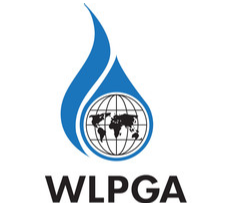WLPGA’s global roadmap for auto propane sees propane vehicles triple
The World Liquid Petroleum Gas Association’s A Global Roadmap for Autogas: Reaping the environmental and economic benefits of using more LPG in road transport examines the global potential for autogas / auto propane in vehicle fleets over the next 20 years.
It considers two scenarios: a baseline ‘business-as-usual’ case, where policy support for auto propane is assumed to remain at current levels, and a more bullish ‘alternative scenario’, where the auto propane sector enjoys stronger support from governments, vehicle manufacturers and the LPG industry. In the alternative scenario, the number of propane vehicles triples and demand for the product doubles compared with current levels over the next 20 years; associated social, economic and environmental benefits are estimated at over US$54 billion.
 In its report, the WLPGA says that the role of policy makers is crucial to make the alternative scenario a reality: transport and fuel tax policies are needed that ensure auto propane is financially attractive to end users. Their research shows that motorists will only switch to auto propane if it is cheaper at the pump than other fuels so that savings on running costs quickly repay the upfront cost of converting the vehicle. It also says that private sector stakeholders such as energy producers, and fuel system equipment manufacturers and installers must also play a role by investing in new vehicle technologies and bioLPG.
In its report, the WLPGA says that the role of policy makers is crucial to make the alternative scenario a reality: transport and fuel tax policies are needed that ensure auto propane is financially attractive to end users. Their research shows that motorists will only switch to auto propane if it is cheaper at the pump than other fuels so that savings on running costs quickly repay the upfront cost of converting the vehicle. It also says that private sector stakeholders such as energy producers, and fuel system equipment manufacturers and installers must also play a role by investing in new vehicle technologies and bioLPG.
Understanding that there can be no single approach to developing government incentives due to the specific national circumstances of each country, WLPGA provides a series of recommendations for policy makers. These include:
- Establishing a wider and complementary role for all alternative fuels within the transport fuel mix, taking a technology-neutral approach to allow all alternatives to compete fairly.
- Establishing emission standards on a well-to-wheel basis that takes into account emissions along the fuel supply chain, not just at the tailpipe.
- Introducing mandates for government fleets to acquire propane vehicles and fuelling systems so that government can take a leadership role in protecting the environment and reducing operating costs.
 In its report, the WLPGA says that the role of policy makers is crucial to make the alternative scenario a reality: transport and fuel tax policies are needed that ensure auto propane is financially attractive to end users. Their research shows that motorists will only switch to auto propane if it is cheaper at the pump than other fuels so that savings on running costs quickly repay the upfront cost of converting the vehicle. It also says that private sector stakeholders such as energy producers, and fuel system equipment manufacturers and installers must also play a role by investing in new vehicle technologies and bioLPG.
In its report, the WLPGA says that the role of policy makers is crucial to make the alternative scenario a reality: transport and fuel tax policies are needed that ensure auto propane is financially attractive to end users. Their research shows that motorists will only switch to auto propane if it is cheaper at the pump than other fuels so that savings on running costs quickly repay the upfront cost of converting the vehicle. It also says that private sector stakeholders such as energy producers, and fuel system equipment manufacturers and installers must also play a role by investing in new vehicle technologies and bioLPG.